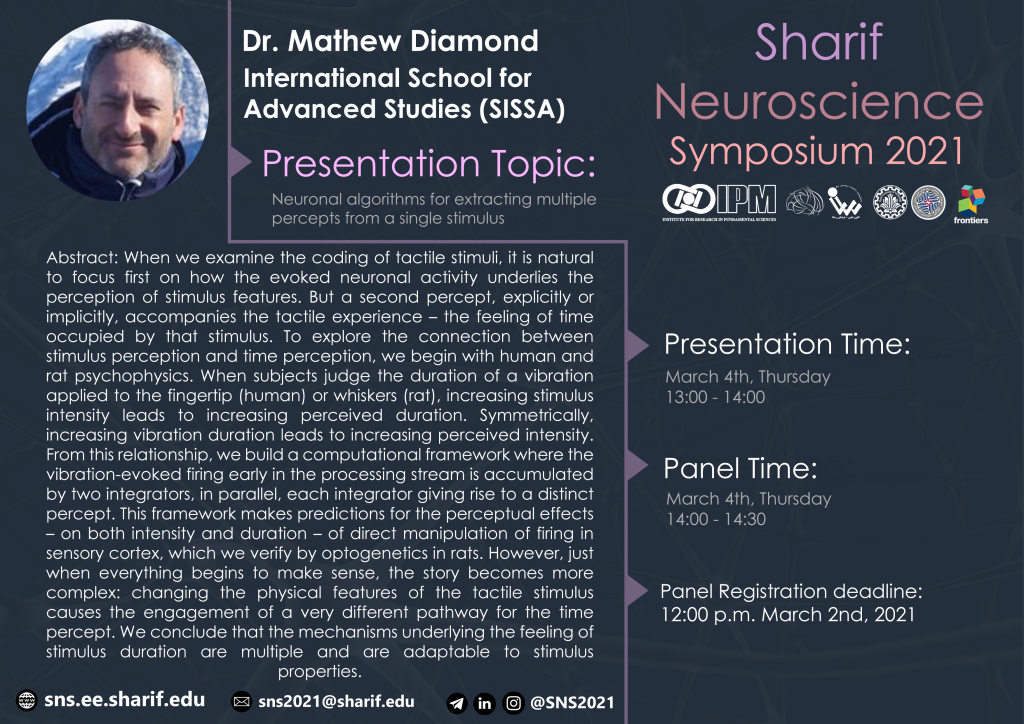When we examine the coding of tactile stimuli, it is natural to focus first on how the evoked neuronal activity underlies the perception of stimulus features. But a second percept, explicitly or implicitly, accompanies the tactile experience – the feeling of time occupied by that stimulus. To explore the connection between stimulus perception and time perception, we begin with human and rat psychophysics. When subjects judge the duration of a vibration applied to the fingertip (human) or whiskers (rat), increasing stimulus intensity leads to increasing perceived duration. Symmetrically, increasing vibration duration leads to increasing perceived intensity. From this relationship, we build a computational framework where the vibration-evoked firing early in the processing stream is accumulated by two integrators, in parallel, each integrator giving rise to a distinct percept. This framework makes predictions for the perceptual effects – on both intensity and duration – of direct manipulation of firing in sensory cortex, which we verify by optogenetics in rats. However, just when everything begins to make sense, the story becomes more complex: changing the physical features of the tactile stimulus causes the engagement of a very different pathway for the time percept. We conclude that the mechanisms underlying the feeling of stimulus duration are multiple and are adaptable to stimulus properties.

